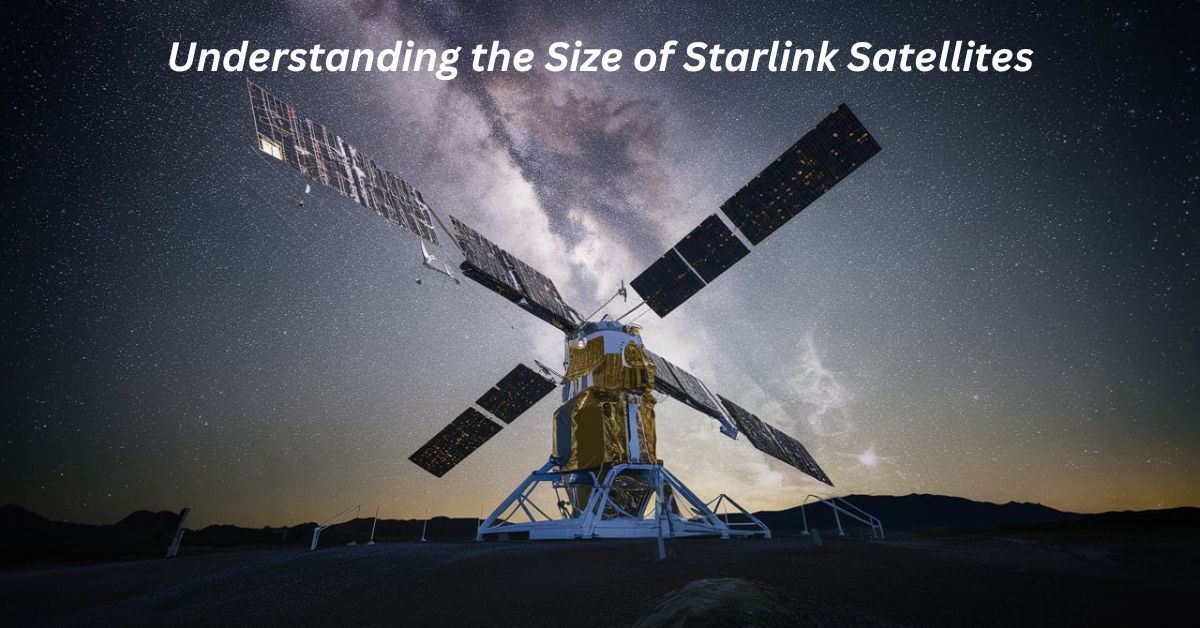Starlink satellites are small spacecraft that orbit Earth to provide internet access. They are part of a project by SpaceX to create a global network. These satellites work together to beam internet signals to Earth. This helps people in remote areas get online.
Have you ever looked up at night and seen a string of lights moving across the sky? Those might be Starlink satellites. They’re becoming a common sight for stargazers. But not everyone is happy about this.
Starlink satellites are changing how we connect to the internet. They’re also changing how we see the night sky. In this article, we’ll learn about these satellites. We’ll explore their size, how they work, and what they mean for our world.
Size and Shape of Starlink Satellites
Starlink satellites are not very big. The first ones were about the size of a table. They weighed about 260 kilograms. That’s about as heavy as a small car. These satellites were flat and had one solar panel. The panel would unfold once the satellite was in space.
The newer Starlink satellites are bigger. They’re called V2 Mini satellites. These weigh about 800 kilograms. That’s more than three times heavier than the first ones. They’re also about four times larger in size. But even though they’re bigger, they’re harder to see from Earth.
SpaceX plans to make even bigger satellites in the future. These will be called V2 satellites. We don’t know exactly how big they’ll be yet. But we know they’ll be larger than the V2 Mini satellites. SpaceX needs a bigger rocket to launch these new satellites.
How Starlink Satellites Work?
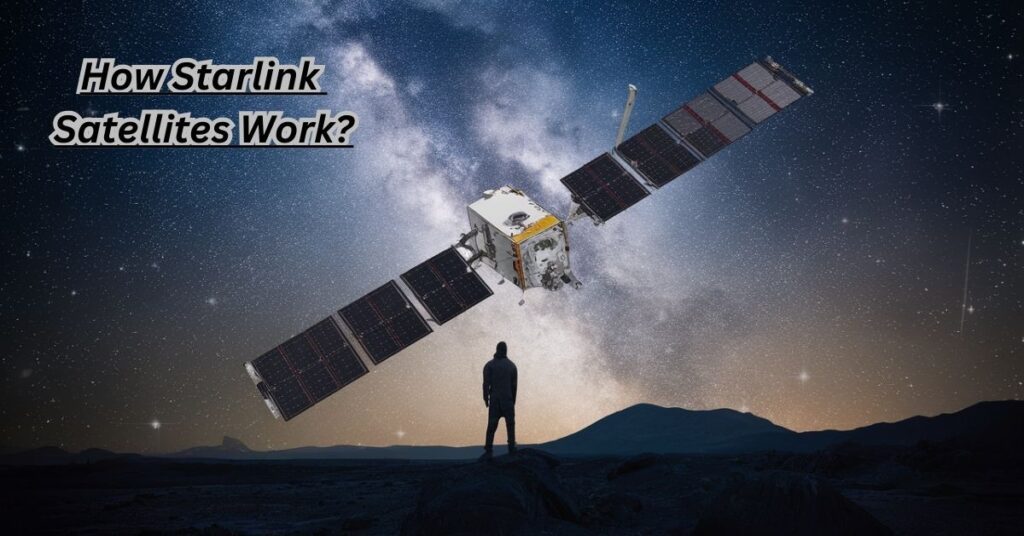
Starlink satellites orbit Earth at a height of about 550 kilometers. This is much closer than traditional internet satellites. Being closer to Earth helps the internet signal travel faster. It means people can get faster internet speeds.
Each Starlink satellite has antennas to send and receive signals. These antennas talk to ground stations on Earth. The ground stations connect to the regular internet. Then the satellites beam the internet signal to special dishes at people’s homes.
Starlink satellites move very fast. They complete an orbit around Earth in about 90 minutes. This means they’re always moving across the sky. To keep a constant internet connection, the network needs many satellites. That’s why SpaceX plans to launch thousands of them.
Key Features of Starlink Satellites
Starlink satellites are like tiny spaceships with some cool tricks up their sleeves. They can move around in space using special engines. They power themselves with sunlight using a big solar panel. These smart satellites can even dodge space junk on their own. When they get old, they’re designed to fall back to Earth and burn up safely.
- Starlink satellites have several important features:
- They use ion thrusters to move in space.
- They have a single solar panel for power.
- They can automatically avoid space junk.
- They’re designed to fall out of orbit at the end of their life.
- They have special coatings to make them less bright in the sky.
Evolution of Starlink Satellites
Starlink satellites have come a long way since they first launched. They started small, but now they’re getting bigger and better. The newest ones can do more stuff, like talk to cell phones. SpaceX keeps making them smarter and less visible in the night sky. It’s exciting to think about what the next version will be able to do!
1. First Generation Satellites
The first Starlink satellites were launched in 2019. They were smaller and simpler than the newer ones. These satellites weighed about 260 kilograms. They were flat and had one large solar panel. SpaceX launched 60 of these satellites at a time on their Falcon 9 rockets.
2. V2 Mini Satellites
In 2023, SpaceX started launching V2 Mini satellites. These are much bigger than the first generation. They weigh about 800 kilograms. They’re also about four times larger in size. These satellites can handle more internet traffic. They’re also designed to be less visible from Earth.
3. Future V2 Satellites
SpaceX plans to launch even bigger satellites in the future. These will be called V2 satellites. We don’t know exactly how big they’ll be. But they’ll be larger than the V2 Mini satellites. SpaceX needs to finish their new Starship rocket to launch these big satellites.
4. Brightness Reduction Efforts
SpaceX has worked to make their satellites less bright. The first Starlink satellites were very visible in the night sky. This upset many astronomers. The new satellites have special coatings to reflect less light. They can also change their position to be less visible from Earth.
5. Improved Capabilities
Each new generation of Satellites of Starlink can do more. They can handle more internet traffic. They also have better systems for avoiding space junk. The newer satellites can communicate directly with cell phones. This could provide internet and phone service in very remote areas.
Impact of Starlink Satellites
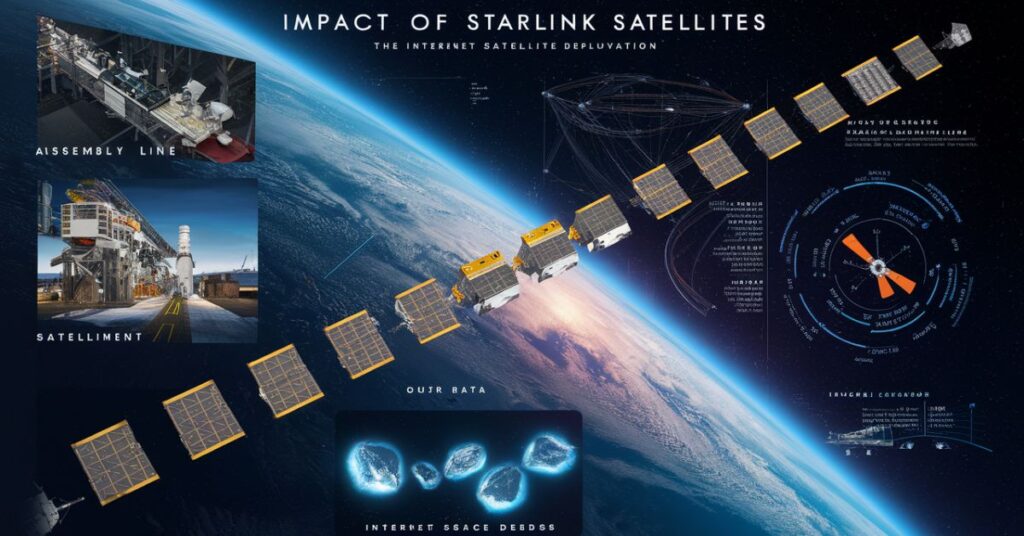
Starlink satellites are changing how we access the internet. They’re bringing high-speed internet to remote areas. This can help people who couldn’t get online before. It can improve education, healthcare, and business in these areas.
But Satellites of Starlink also have some downsides. They’re visible in the night sky. This can interfere with astronomy. The light from the satellites can make it hard to see stars and planets. Some people worry about having so many satellites in orbit.
There are also concerns about space junk. When satellites stop working, they become space trash. With thousands of Satellites of Starlink planned, this could become a big problem. SpaceX says their satellites will fall out of orbit and burn up when they’re done. But some people are still worried.
Starlink Satellite Specifications
Want to know what makes Starlink satellites tick? Let’s take a peek under the hood. These space gadgets come in different sizes, from table-sized to much larger. They’re packed with antennas and computers to beam internet to Earth. Some can even talk directly to your phone! Each new version gets more powerful and can handle more internet traffic.
Have a quick look at the specs of different Starlink satellites:
| Feature | First Generation | V2 Mini | Future V2 |
| Weight | 260 kg | 800 kg | Unknown |
| Size | Table-sized | 4x larger | Larger |
| Launch | 60 per rocket | 21+ per rocket | Unknown |
| Special Features | Basic internet | Cell phone connection | Unknown |
Future of Starlink Satellites
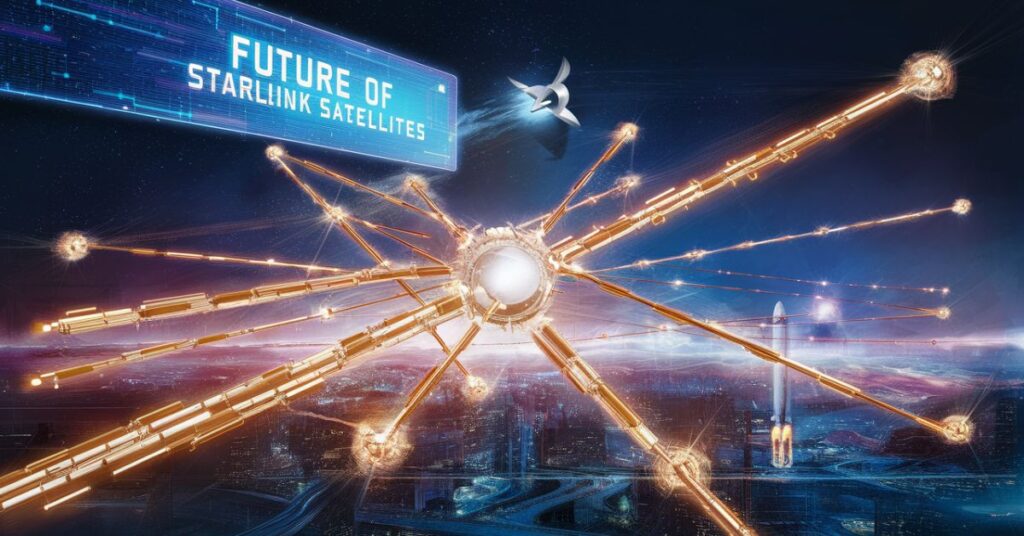
SpaceX has big plans for Starlink. They want to launch thousands more satellites. This will improve coverage and internet speeds. The company is always working on new satellite designs. Each new version is more advanced than the last.
One big goal is to provide internet everywhere on Earth. This includes ships at sea and airplanes in flight. Starlink could even provide internet on other planets. SpaceX is thinking about how to use Starlink for missions to Mars.
There are challenges ahead. SpaceX needs to balance providing internet with protecting the night sky. They also need to deal with space junk concerns. As Starlink grows, these issues will become more important.
Starlink Satellites and Space Exploration
Satellites of Starlink could play a role in future space exploration. They might help communicate with spacecraft far from Earth. This could be useful for missions to the Moon or Mars. The technology used in Satellites of Starlink could also help build communication networks on other planets.
SpaceX is already thinking about this. They’re designing satellites that can work in the harsh conditions of space. These satellites need to be tough and long-lasting. The lessons learned from Starlink could help create better spacecraft for exploration.
Starlink might also help fund SpaceX’s other projects. The money from internet services could support missions to Mars. This shows how Earth-orbit projects like Starlink can help deeper space exploration.
Read this article: Minecraft: Bedrock Edition (2011) Game Icons and Banners
Challenges Facing Starlink Satellites
Satellites of Starlink have some tricky problems to solve. They need to avoid bumping into space junk while zooming around Earth. Some people worry they’re too bright and mess up the view of the stars. There’s also the question of how to provide good internet in all kinds of weather. It’s a space-age puzzle that SpaceX is working hard to figure out!
- Starlink satellites face several challenges:
- Managing space debris and avoiding collisions.
- Reducing brightness to protect astronomy.
- Dealing with radio frequency interference.
- Providing consistent service in all weather conditions.
- Competing with other satellite internet providers
Global Impact of Starlink Satellites
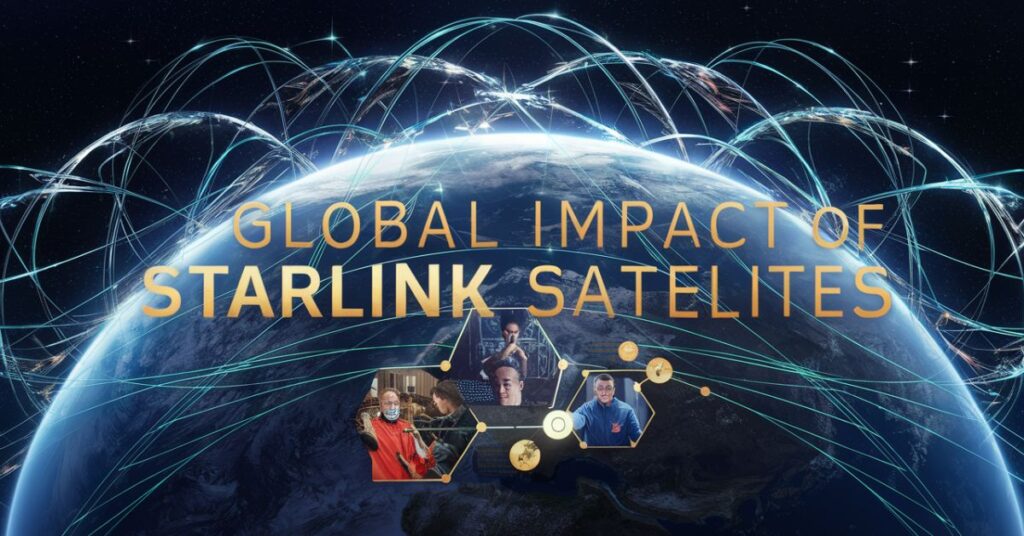
Satellites are changing how we think about internet access. They’re bringing the internet to places that never had it before. This could have a big impact on global education and economic development. People in remote areas could access online learning and job opportunities.
But there are also concerns about Starlink’s global impact. Some worry that it gives one company too much control over internet access. There are also questions about how Starlink will work in different countries. Each nation has its own rules about internet and satellite use.
Despite these challenges, Starlink continues to grow. It’s changing how we connect to the internet and how we see our night sky. As the project expands, its global impact will only increase.
Read this article: Ball Surfer 3D: The Ultimate Guide to Getting the Game
Final Words
Starlink satellites are a big step in bringing internet to the whole world. They’re small but powerful machines that orbit Earth. These satellites are always changing and getting better. SpaceX is working hard to make them less visible and more useful.
The future of Starlink is exciting but uncertain. We don’t know exactly how it will change our world. It could bring internet to millions of people who don’t have it now. But it also raises questions about space junk and the night sky.
As Starlink grows, we’ll need to balance its benefits and drawbacks. It’s a reminder of how technology can change our lives in big ways. Whether you see it as good or bad, they’re sure to be an important part of our future.
Frequently Asked Questions
How many Starlink satellites are there?
As of 2023, there are over 4,000 Starlink satellites in orbit. SpaceX plans to launch many more.
Can I see Starlink satellites from Earth?
Yes, you can often see Starlink satellites as a line of lights moving across the night sky.
How fast is Starlink internet?
Starlink can provide download speeds of 50 to 200 Mbps in many areas. This can vary based on location.
Are Starlink satellites bad for astronomy?
They can interfere with astronomical observations. SpaceX is working to make them less bright.
How long do Starlink satellites last?
Starlink satellites are designed to last about 5 years. After that, they fall out of orbit and burn up.
